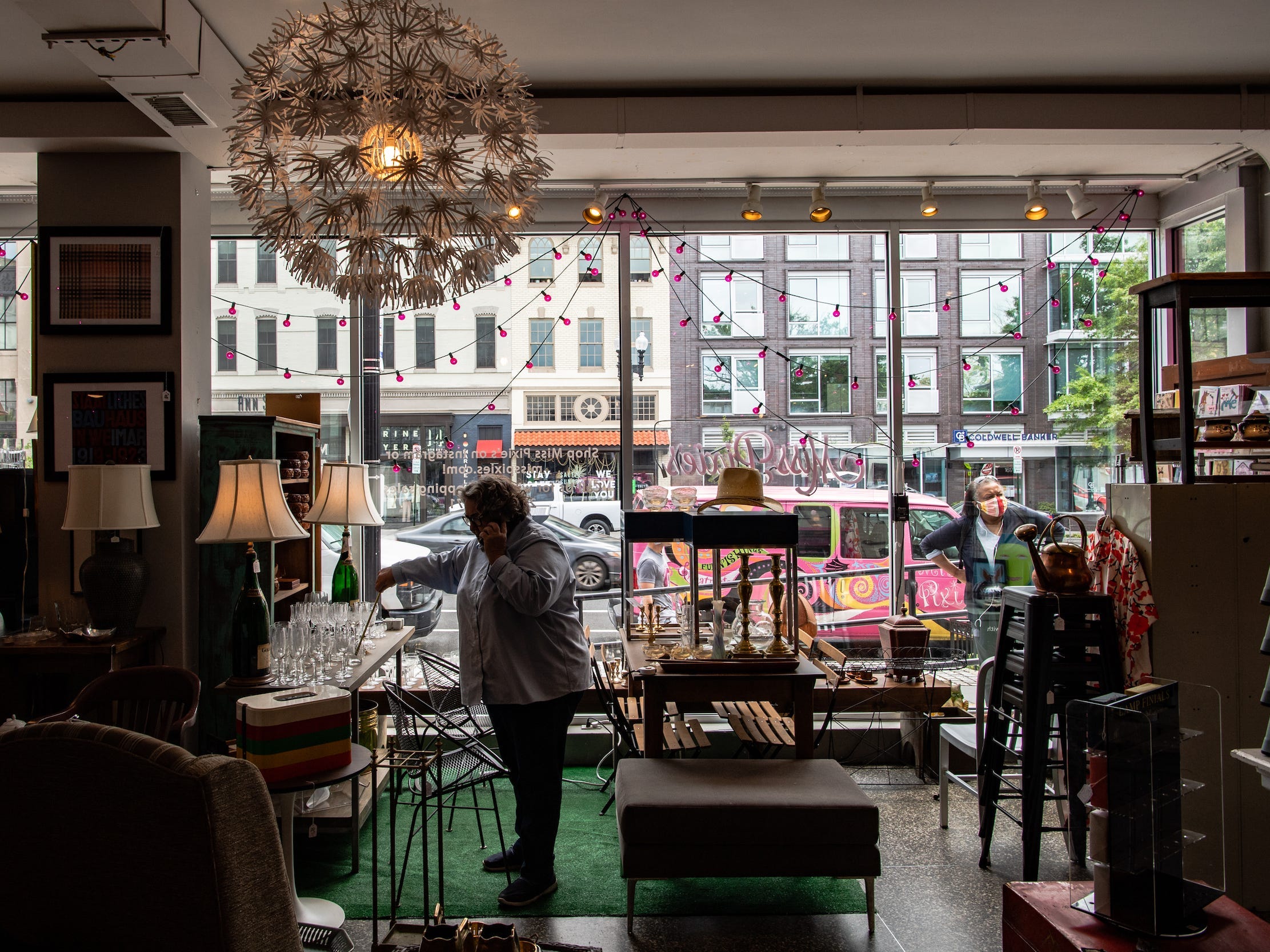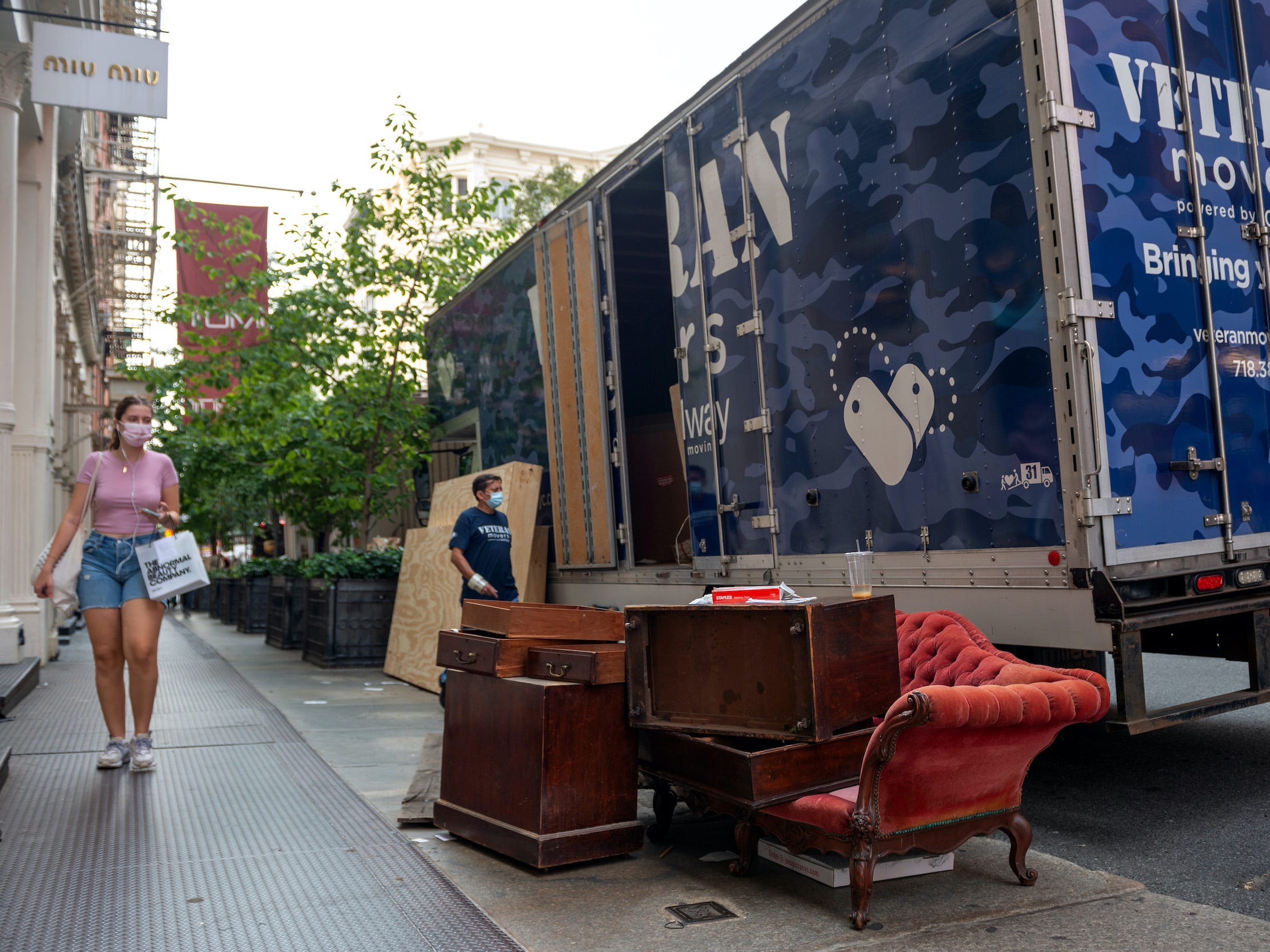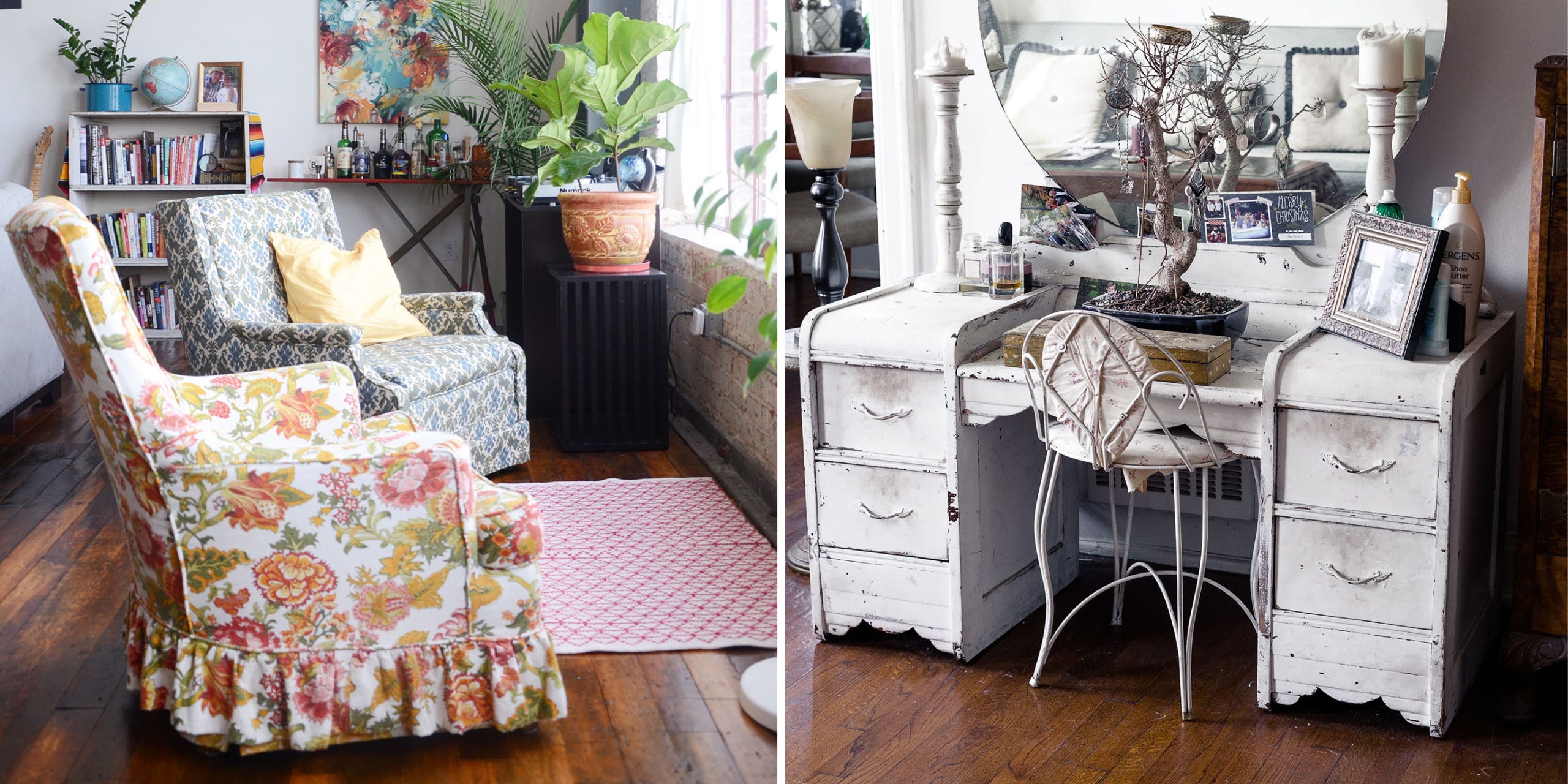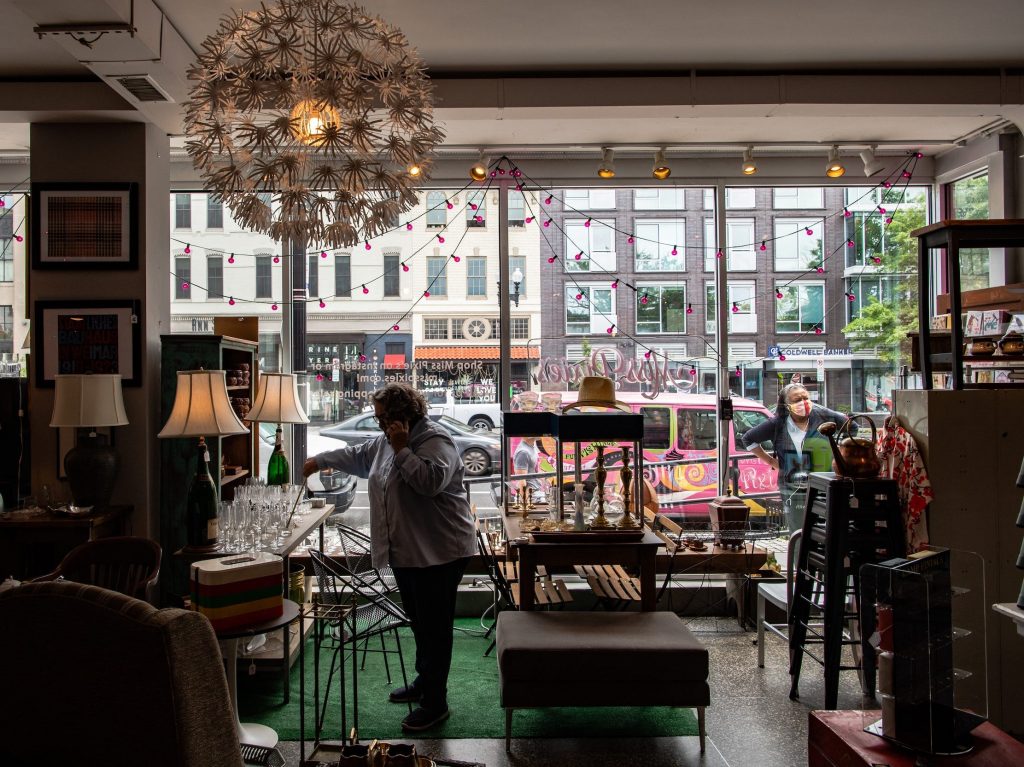
Salwan Georges/The Washington Post via Getty Images
- Vintage furniture has become a major trend in home decor during the pandemic.
- It's driven by a combination of factors, including sustainability and ongoing supply chain issues.
- Plus, "the pandemic has definitely changed the way people shop," AptDeco's CEO says.
- See more stories on Insider's business page.
Most of the clients who come into Mike Kollman's Brooklyn-based vintage store fit a certain mold: Millennial or older, maybe even homeowners, with stable jobs and healthy paychecks. They're in search of vintage credenzas, or they want Kollman to restore their well-loved Eames Lounge Chair.
But lately, Kollman has started to see some new customers trickle in – customers who are 20, or 21, who roll up on a skateboard and are in search of a vintage lamp.
"It's kind of amazing that they're not just following the easier path over to Ikea where you can get a lamp for $9," Kollman told Insider.
Kollman's new customers represent a new wave of millennials and Gen Z who are eschewing mass-market home decor for vintage wares. Those types of goods – from secondhand furniture to pre-owned art, dishes, or decor – are flooding social media sites, driven in part by a shadow economy of resellers who run their businesses on the back of Instagram.
But the trend is bigger than the world of Instagram sellers – in fact, it's the result of a combination of overlapping factors: Younger generations' focus on sustainability, ongoing supply chain issues that make it harder to buy new furniture, and a pandemic-driven desire to make our spaces more stylish, or to simply make them feel like home.
All of these factors have collided to drive the latest trend in home decor, which isn't actually new at all - it's vintage.
Changing the way people shop

Alexi Rosenfeld/Getty Images
Kollman has been running his shop, I Like Mike's Mid Century Modern, since 2009. While he sells vintage goods, he also restores them, refinishing high-end furniture and repairing vintage lighting or clocks.
He describes the world of vintage shops as "just kind of a bunch of hippies trying to make a decent living, doing something we like to do." But it's also allowed him to have a front-row seat to the cyclical nature of home decor trends: For instance, people used to opt for hand-made furniture with a wait time of 12 weeks or more. Then, the rise of overseas manufacturing meant customers could get a $300 couch, and quickly. All of a sudden, pricier, high-quality furniture was out of favor.
"I mean, God, for the last 50 years, we've been more used to getting anything we want, when we want it," he said.
The pandemic, he said, has created an opportunity for the cycle to shift again.
That shift has been evident at AptDeco, a 6-year-old online marketplace for secondhand home decor that has seen a rapid acceleration of its business during the pandemic. Prior to March 2020, most of the company's business was centralized in New York City. But as people began migrating out of Manhattan, Brooklyn, or Queens, AptDeco expanded along with them. The company now has operations in Pennsylvania and San Francisco and said it expects to do between 200 and 500 deliveries of furniture and home decor per region, per day in 2021.
Reham Fagiri, AptDeco's cofounder and CEO, told Insider that customers began turning to her platform in search of home office furniture early on in the pandemic as supply chain disruptions hampered the furniture industry. Those remain unresolved 18 months later, to the extent that Mark Schumacher, the CEO of the North American Home Furnishings Association, an industry trade group, recently issued a plea to President Joe Biden directly, asking for relief from "out-of-control shipping costs" and other supply chain disruptions.
The International Housewares Association, another industry trade group, has warned that the turbulence will likely last "at a minimum through February 2022."
It's been a boon for AptDeco. The platform is similar to Craigslist or Facebook Marketplace in that customers shop for goods from sellers based on geographic location, meaning a secondhand desk could arrive in your home office in 24 hours, not several weeks or months. Given that as a society, we've come to expect two-day shipping, this immediacy has worked to AptDeco's advantage: Over the course of the pandemic, the platform has seen an 89% increase in sales of bookcases, a 72% jump in desks, and a 76% uptick in lighting.
"I think the pandemic has definitely changed the way people shop," Fagiri said. "It's brought a lot more consumers online, it forced retailers across the board - whether it's furniture or not - to come online, and it really opened up consumers to the idea of shopping used."
'Curvy, colorful, whimsical' decor

Esteban Cortez for Apartment Therapy; Jessica Isaac for Apartment Therapy
For many shoppers, buying secondhand or vintage is about more than just immediacy - it's about sustainability.
A staggering amount of furniture ends up in landfills - about 80%, according to the Environmental Protection Agency. In 2018, 9.68 million tons of furniture and home furnishings were sent to a landfill, up from 6.55 million tons in 2000. Items like carpets and rugs are less likely to be recycled, or combusted for energy. The EPA found that 73% of rugs are sent to a landfill, which equated to 2.46 million tons in 2018.
Fagiri said AptDeco has noticed that it's started attracting a younger, sustainability focused consumer base who feels good about "helping divert products from landfills."
"By choosing used, you're actually helping to impact the environment in a positive way," she said.
For other consumers, though, it's about creating a space that feels personal, especially during a time when we were confined to our homes. Secondhand decor comes with its own history, either in the theoretical sense or the physical, more visible one, and it can make a house feel like, well, a home.
On top of that, vintage is just plain chic.
Maxwell Ryan, the founder and CEO of lifestyle blog Apartment Therapy, told Insider in an email that he feels the vintage and secondhand trend is mostly just about creating "instant style cachet" in your home.
He's noticed that younger generations have fostered a genuine love of vintage, particularly the styles of 1970s and '80s, which he described as "curvy, colorful, whimsical."
Combined with sellers who have recognized the importance of high-quality photographs on platforms like Instagram and easy ways to pay for items via Venmo and Shopify, the vintage movement has taken over.
"The style, value, and responsible feeling of vintage, as well as 'this is not your parent's furniture,' is definitely on a roll now," he said. "Pair that with the uniqueness of vintage finds and you've got a style movement that's looking for it's own soul."

